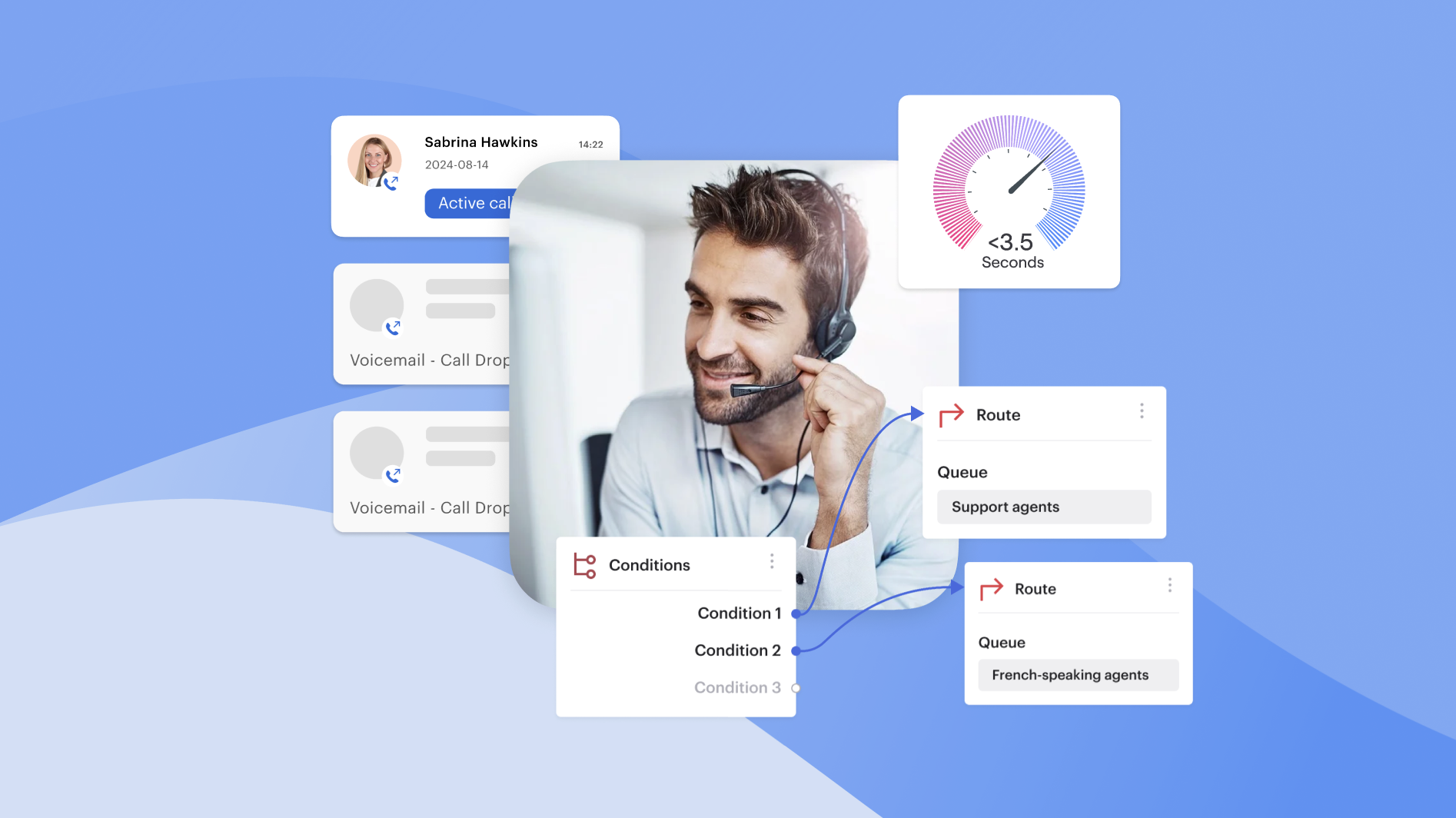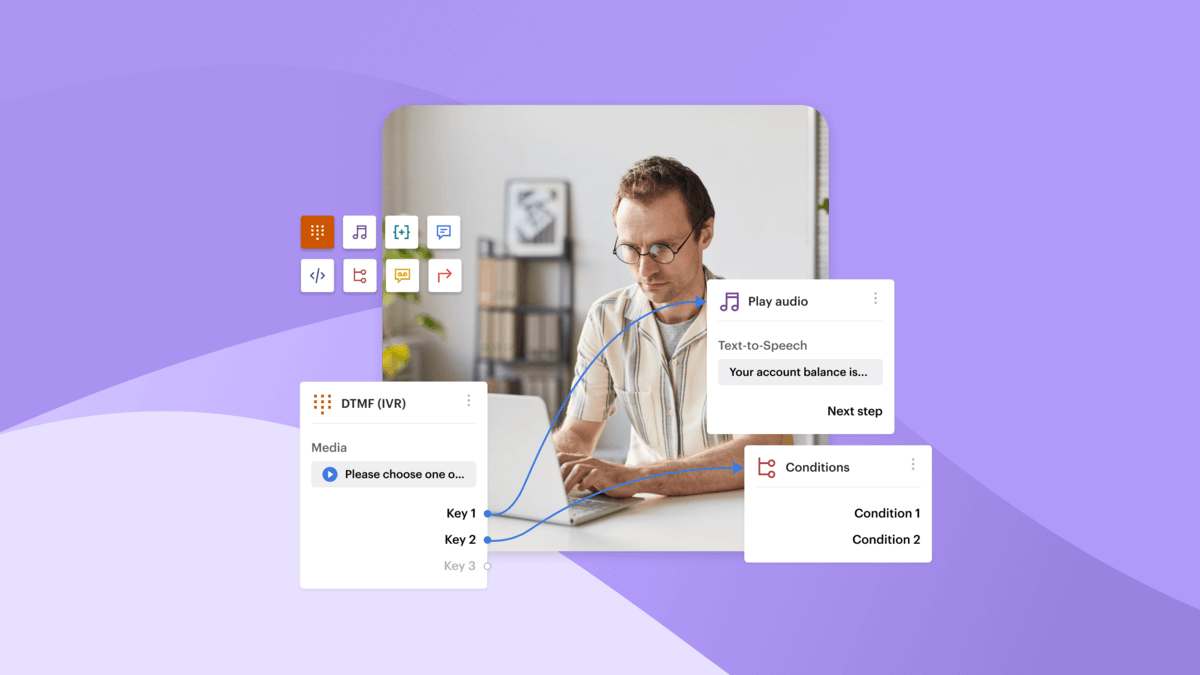From gauging the true value of customer satisfaction metrics to understanding the limitations of AI in customer service, George paints a vivid picture of what’s true and false in the contact center industry. Let’s get started!
Our Conversation with George Steed
ANDREAS GREGORAS: The contact center industry is filled with its fair share of conventional wisdom, but as we know, not everything is as it seems. Today, we’re joined by George Steed, the Sales Director at Voiso, to discuss some of the most persistent myths in the industry and why they don’t hold up under scrutiny. Thank you for joining us today, George.
GEORGE STEED: Thank you for having me, Andreas. The contact center industry is indeed a fascinating space, but like any industry that’s evolving rapidly, it’s easy for myths to take root and persist. I’m excited to shed some light on these misconceptions.
ANDREAS GREGORAS: Let’s dive right in. One of the most common beliefs is that “Customer Satisfaction is the Only Metric That Matters.” What’s your take on this?
GEORGE STEED: It’s true that customer satisfaction, or CSAT, is crucial — it’s a direct reflection of how customers feel about a specific interaction. However, focusing exclusively on CSAT is like looking at a single tree instead of the entire forest. The customer journey is multifaceted, and to truly understand and improve it, you need to consider other metrics like First Contact Resolution (FCR), Net Promoter Score (NPS), and Customer Effort Score (CES).
For example, while a customer might report being satisfied with an interaction if they had to go through multiple steps to get there, their overall experience might not be positive. This is where the CES comes in — according to Gartner, reducing customer effort is actually a more significant driver of loyalty than just ensuring customer satisfaction.
Let me give you a real-life example. We worked with a client who initially focused only on CSAT. Their scores were high, but they were puzzled by declining customer retention. After analyzing their processes, we discovered that customers were having to reach out multiple times to resolve issues, leading to frustration. By shifting their focus to FCR and CES, they not only improved retention but also saw a boost in NPS, as customers appreciated the smoother, more efficient service.
ANDREAS GREGORAS: That’s an insightful approach. So, it’s not just about making customers happy in the moment but ensuring their entire experience is seamless and effortless.
GEORGE STEED: Exactly. As marketers and business leaders, it’s our job to look at the big picture. The customer journey doesn’t end with a single interaction; it’s an ongoing relationship that needs nurturing across all touchpoints.
ANDREAS GREGORAS: Another myth we hear a lot is that “Automation and AI Will Completely Replace Human Agents.” How does that stand up in your experience?
GEORGE STEED: Automation and AI are incredible tools, but the idea that they can completely replace human agents is a bit of a fantasy — at least for now. AI excels at handling repetitive tasks, and it’s a great complement to human agents, but when it comes to complex problem-solving, emotional intelligence, and personalized service, there’s simply no substitute for a human touch.
Let me share a story. A close friend of mine runs a BPO company in Central Europe with about 1,000 agents focused on outbound calls. Intrigued by the AI hype, he decided to trial AI-driven agents. The results were quite telling. His company’s conversion rate dropped by 10%, and the AI agents received notably low NPS scores. Customers reported feeling uneasy when they realized they weren’t speaking to a human, and many chose to simply hang up.
This experiment underscored a critical point: while AI can assist with certain aspects of customer service, the human connection remains vital, particularly in building trust and loyalty. Interestingly, after reverting to a model that blends AI with human agents, my friend saw his conversion rates bounce back and even improve as his agents could now focus on higher-value interactions, leaving the repetitive tasks to AI.
ANDREAS GREGORAS: That’s a powerful example. It’s clear that while AI has its place, it’s not the end-all-be-all solution.
GEORGE STEED: Absolutely. At Voiso, we’ve embraced this hybrid approach. Our platform integrates AI to handle routine tasks, but we empower human agents to take charge of complex and meaningful customer interactions. This balance allows us to deliver exceptional service while maintaining the human touch that customers crave.
ANDREAS GREGORAS: Now, what about the perception that “Technology is Complicated”? This seems to be a significant barrier for many businesses.
GEORGE STEED: That’s a common concern, and it’s understandable — especially for businesses that have experienced the headaches of legacy systems. Traditionally, implementing VoIP and other advanced contact center technologies was indeed complex, requiring extensive IT resources and expertise. But today, that’s simply not the case.
Modern platforms, particularly cloud-based solutions, have simplified the entire process. At Voiso, we’ve seen clients go from initial contact to full implementation in under 24 hours. One of our clients, for instance, had struggled with an outdated system that required constant maintenance and complex configurations. After switching to Voiso, they not only cut down on their IT costs by 23% but also reported a 24% increase in operational efficiency.
This ease of implementation, coupled with robust integration capabilities, means that businesses can now upgrade their contact center technology without the typical hassles. Voiso’s platform is designed to be user-friendly and quick to deploy, so companies can start reaping the benefits almost immediately.
ANDREAS GREGORAS: That’s reassuring for businesses wary of making the leap. Finally, there’s the belief that “It’s Hard to Connect with Someone Over the Phone.” What’s your perspective on this?
GEORGE STEED: The idea that phone-based customer service is impersonal or ineffective is another misconception. In reality, many customers still prefer the immediacy and personal touch of a phone conversation, especially for complex issues. A study by American Express found that 40% of customers prefer speaking to a live agent on the phone for more complicated matters.
However, the challenge today is that customers expect brands to be available across multiple channels, not just the phone. This is where the concept of omnichannel communication becomes crucial. Customers want the flexibility to choose how they interact with a brand — whether that’s through phone, chat, email, or social media — and they expect a consistent experience across all these channels.
A perfect example of this is our recent collaboration with FXBO, a leading forex broker. FXBO integrated Voiso’s omnichannel features to provide their clients with seamless and personalized communication across various platforms. This integration allowed FXBO to enhance their customer support, providing timely responses whether clients reached out via phone, email, or chat. The result was not only a boost in customer satisfaction but also improved operational efficiency as they were able to manage interactions more effectively across all channels. You can read more about their success here.
ANDREAS GREGORAS: That’s a great case study. It really highlights the importance of being present on the channels your customers prefer.
GEORGE STEED: Exactly. The phone is still a powerful tool, but it’s most effective when integrated into a broader omnichannel strategy. At Voiso, we ensure that businesses can connect with their customers in whatever way they prefer, while maintaining the personal touch that’s so critical in customer service.
ANDREAS GREGORAS: Thank you for sharing these insights, George. It’s clear that by challenging these myths, businesses can better navigate the evolving landscape of customer service.
GEORGE STEED: My pleasure, Andreas. It’s all about staying informed and being willing to adapt. The contact center industry is full of opportunities for those who are ready to look beyond the myths and embrace the realities of today’s market.
Final Thoughts
Staying adaptable, informed, and agile is the key to success, and understanding the nuances of customer satisfaction, and AI’s role in optimizing it, can mean the difference between success and stagnation.
Questioning conventions and implementing omnichannel communication can lead to more informed decisions that reflect today’s market demands. As the contact center industry continues to evolve, so too must businesses in order to keep the pace.




